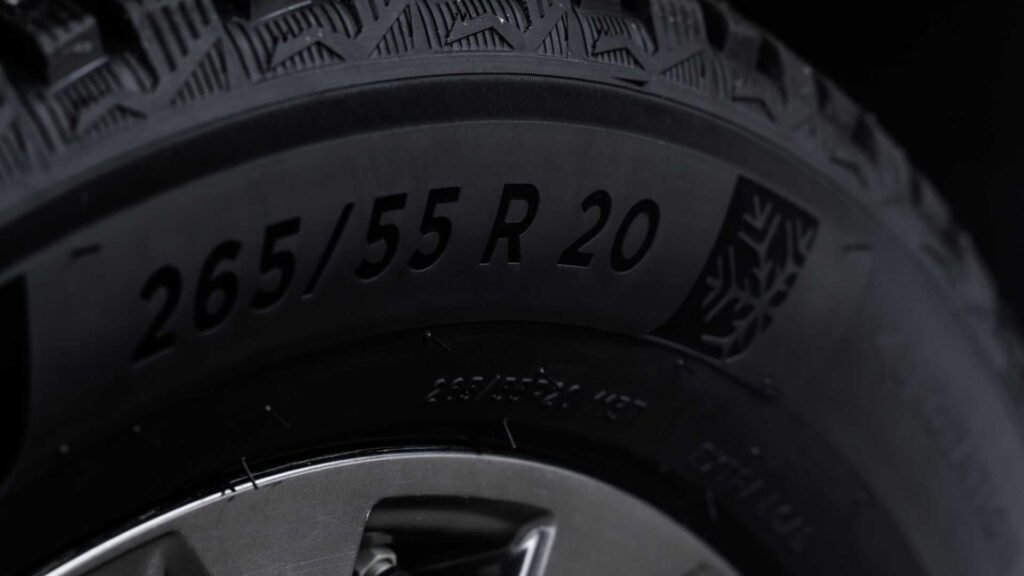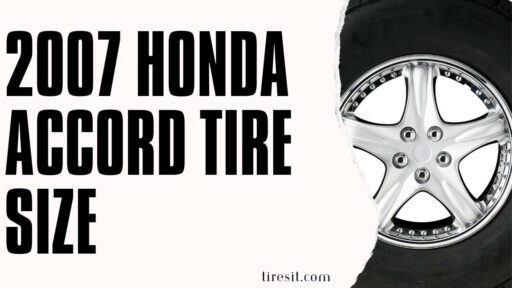Looking for the right tire size for your 2017 Honda Civic tire size? Visit our website to find a comprehensive selection of tires that will meet your vehicle’s needs.
The 2017 Honda Civic tire size has long stood as a paragon of reliability and efficiency in the automotive world. Particularly, the 2017 model year blends classic aesthetics with modern performance in a package that appeals to car enthusiasts, everyday drivers, and vehicle maintenance experts alike. An essential aspect of maintaining the vehicle’s esteemed performance is selecting the optimal tire size for your specific needs. This guide aims to simplify that decision-making process, bolstering your Civic’s performance, fuel efficiency, and safety.
Understanding 2017 Honda Civic tire size
Tire size is denoted by a series of numbers and letters that indicate the width, aspect ratio, construction type, wheel diameter, and load index of the tire. For example, on a typical tire label, you might see something like P225/45R17 94V. Let’s break down what each of these elements means:
- P stands for “Passenger” tire, indicating the tire is designed for passenger vehicles. This is a common designation for cars like the Honda Civic.
- 225 refers to the tire’s width in millimeters measured from sidewall to sidewall. A wider tire can offer better traction and stability.
- 45 is the aspect ratio, which is the height of the tire’s sidewall as a percentage of the tire’s width. A lower number indicates a lower-profile tire.
- R means the tire is of radial construction, the most common type of tire construction today, offering better tread life and ride comfort.
- 17 represents the wheel diameter in inches, which is the size of the wheel that the tire is designed to fit.
- 94 is the load index, which indicates how much weight the tire can support when properly inflated. The higher the number, the greater the load it can bear.
- V is the speed rating, showing the maximum speed at which the tire can carry a load corresponding to its load index under specified service conditions. V-rated tires are rated for speeds up to 149 mph.
Recommended Tire Sizes for Your 2017 Honda Civic
Now that we understand the basics of tire size. Let’s look at the recommended sizes for a 2017 Honda Civic. According to the manufacturer, the recommended tire size is P215/55R16 for all trim levels except the Touring model, which has a larger wheel diameter and therefore requires a different tire size. The Touring trim level is recommended to have P215/50R17 tires.
It’s important to note that these are just recommended sizes, and you can choose a different tire size as long as it meets the load index and speed rating requirements for your specific vehicle. However, using the manufacturer’s recommended size will ensure optimal performance and safety for your Civic.
Factors to Consider When Choosing Tire Size
While the manufacturer’s recommendation is a good starting point, there are other factors to consider when selecting tire size for your 2017 Honda Civic. These include:
- Driving conditions: If you frequently drive in harsh weather conditions or on rough terrain, you may want to choose a tire with a higher profile and more aggressive tread for better traction and durability.
- Driving style: Your driving habits can also impact the type of tire size you choose. If you tend to drive aggressively or take sharp turns, a wider tire with a lower aspect ratio may offer better handling.
- Fuel efficiency: A smaller tire with a lower profile may improve fuel efficiency, as it reduces the rolling resistance of the tire. However, this may come at the expense of ride comfort and noise levels.
- Appearance: Let’s be honest, appearance matters when it comes to car enthusiasts. Some drivers may prefer a larger wheel diameter and a lower profile for a sportier look, but keep in mind that this can also impact performance.
The Importance of the Right Tire
Choosing the correct tire size for your 2017 Honda Civic is more than a matter of aesthetics; it’s crucial for maintaining the car’s designed performance capabilities and ensuring your safety on the road. The right tire size will complement your Civic’s suspension design and weight distribution, optimising handling and fuel efficiency.

Credit: www.pexels.com
Understanding Tire Size Notation
Before we dive into the recommended tire sizes for the 2017 Honda Civic, it’s essential to decode the tire size numbering system, such as 205/55R16. Each number and letter in this sequence represents a specific dimension of the tire, including its width, aspect ratio (height to width ratio), construction type, and diameter of the wheel it fits on. Grasping this notation will help you make an informed decision tailored to your driving preferences and needs.
OEM vs. Aftermarket Tire Sizes
The original equipment manufacturer (OEM) tire size for the 2017 Honda Civic was chosen to provide a balanced performance in terms of handling, comfort, and fuel efficiency. However, aftermarket options can either enhance certain characteristics or offer a more personalised aesthetic. We’ll compare these options, focusing on quality, durability, and how they might affect your Civic’s performance.
OEM Tire Sizes for the 2017 Honda Civic
The 2017 Honda Civic comes with several OEM tire sizes suited for its different trims:
- LX and EX Trims: Standard tire size is 215/55R16.
- EX-T, EX-L, and Touring Trims: They come equipped with a larger 215/50R17 tire.
Aftermarket Tire Options
Aftermarket tires can range dramatically in size and performance characteristics. Popular aftermarket sizes for a sportier appearance and enhanced grip include 225/45R17 and even 235/40R18. Yet, it’s crucial to consider that increasing tire size may affect fuel efficiency and speedometer accuracy.
The Impact of Tire Size on Performance
Changing your tire size can have a significant effect on vehicle dynamics. Larger tires might offer improved traction and a more aggressive look but can also increase fuel consumption and affect the car’s speedometer and odometer accuracy. Conversely, opting for a tire size closer to the OEM specification tends to preserve the vehicle’s original handling and efficiency.
Choosing the Best Tire Size for Your Driving Needs
When selecting a tire size, consider your primary driving conditions. If fuel efficiency and comfort are your priority, sticking close to the OEM tire size might be best. For those seeking better performance and handling, slightly larger, wider tires could be the way to go. Always ensure the tires you choose to comply with the load index and speed rating suitable for your Civic to maintain safety and optimal performance.
Maintenance and Care for Your Tires
Regardless of the tire size, regular maintenance is paramount for maximising performance, longevity, and safety. This includes keeping your tires properly inflated, regular rotations, and replacing them once wear indicators are visible. Remember, well-maintained tires can significantly impact your Civic’s handling, fuel efficiency, and overall safety on the road.
Real-World Tire Size Impact
Case Study 1: Upgrading to Larger Aftermarket Tires
A study involving a 2017 Honda Civic owner who switched from OEM tires to larger aftermarket options revealed fascinating results. While the car gained a more commanding presence on the road and improved cornering capabilities, there was a noticeable reduction in fuel efficiency. This case highlights the importance of weighing performance benefits against potential trade-offs.
Case Study 2: OEM vs Different Tire Size Performance
Comparing two identical 2017 Honda Civics, one with OEM tires and another with a set of larger, aftermarket tires, showed that while the latter had slight advantages in grip and handling, it also had longer braking distances in wet conditions. This emphasises that any change from OEM specifications should be carefully considered and aligned with your driving needs and safety requirements.
Frequently Asked Questions (FAQs)
What is the impact of tire size on fuel efficiency?
Tire size can significantly affect your vehicle’s fuel efficiency. Larger tires add weight and increase rolling resistance, which requires more energy (fuel) to move the vehicle, leading to decreased fuel efficiency. Conversely, smaller tires might improve fuel economy but may also impact the vehicle’s handling and stability.
How does changing the tire size affect my car’s speedometer?
Changing your tire size without recalibrating your vehicle’s speedometer can lead to inaccurate speed readings. Larger tires cover more ground with each rotation, causing the speedometer to show a speed lower than the vehicle’s actual speed. Similarly, smaller tires will make the speedometer read at a higher speed than you’re actually travelling.
Can I fit any size tire on my 2017 Honda Civic tire size?
While there is some flexibility, not all tire sizes are suitable for a 2017 Honda Civic. The tire size must be compatible with the wheel diameter, and the overall tire dimensions must fit within the vehicle’s wheel wells without rubbing against the suspension or bodywork. It’s essential to consult with a tire professional to ensure any new tire size is appropriate for your vehicle.
Will changing my tire size void my vehicle’s warranty?
Changing your tire size should not, in itself, void your vehicle’s warranty. However, any damage attributable to the use of incorrectly sized tires could potentially not be covered under warranty. It’s best to check with your vehicle manufacturer or dealership to understand how tire changes could affect your warranty coverage.
How often should I check my tire pressure?
It’s recommended to check your tire pressure at least once a month and before long trips. Proper tire inflation is vital for optimal driving performance, fuel efficiency, and tire longevity. Tire pressure can change with fluctuations in temperature, so it’s especially important to check as the seasons change.
What should I do if my new tires make my car handle differently?
If you notice changes in your vehicle’s handling after installing new tires, it’s important to first ensure that the tires are properly inflated according to the manufacturer’s recommendations. If the handling issues persist, it may be due to the new tires’ size, tread pattern, or construction. Consult with a tire or automotive professional to assess whether the tires are suitable for your vehicle and driving needs.
How do I know when it’s time to replace my tires?
Tires should be replaced when they reach the end of their useful life, which can be determined by tread wear. Most tires have tread wear indicators — raised sections spaced intermittently in the bottom of tread grooves. When the tread is worn down to the level of these indicators, it’s time to replace the tire. Additionally, any signs of sidewall damage, bulges, or other visible damage mean the tire needs to be replaced.
Conclusion of 2017 Honda Civic tire size
Selecting the right tire size for your 2017 Honda Civic tire size is a crucial aspect of vehicle maintenance that significantly affects performance, safety, and efficiency. By understanding the nuances of tire sizing, considering your driving needs, and adhering to proper maintenance routines, you can enhance your Civic’s driving experience while ensuring it performs safely and efficiently for years to come.
We invite you to share your own experiences or questions about choosing the right tire size for your Honda Civic in the comments. Whether you’ve stuck with OEM specifications or ventured into aftermarket options, your insights can help fellow enthusiasts make informed decisions.





